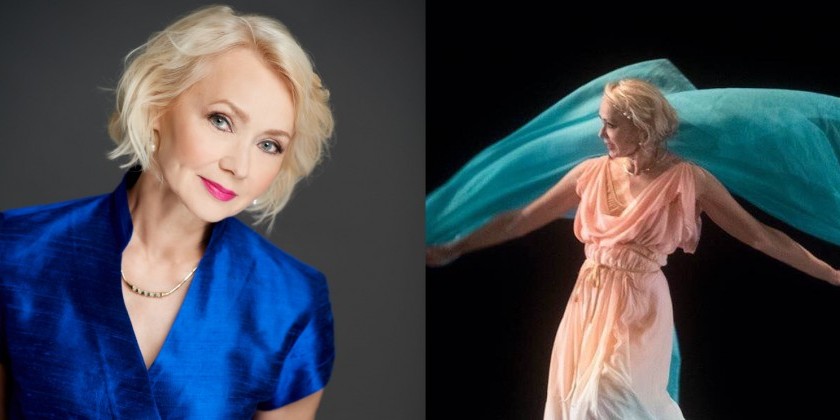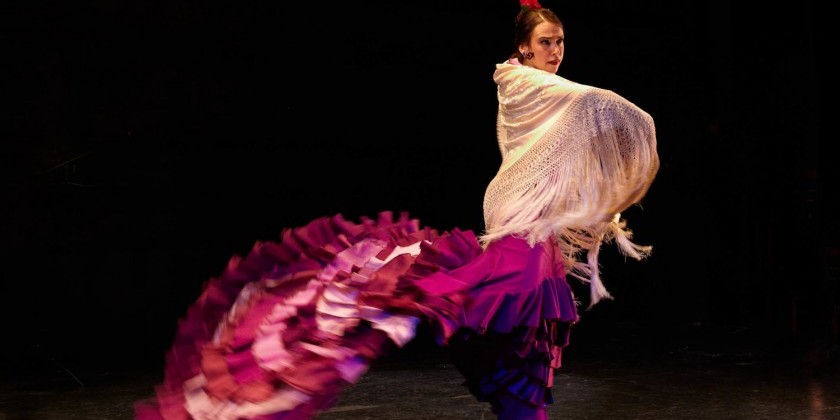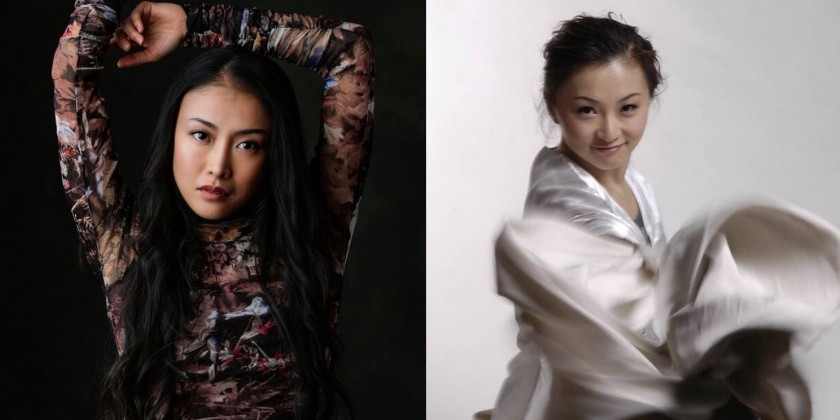Freemove Dance's Jenn Freeman on "...it's time..." At The 14 Street Y

The Founder Talks Time, Money, and the Expiration of Experiences
October 11-14, 2018
The 14th Street Y
Choreographed by Jenn Freeman; Original composition by Dani Markham
For tickets, click here
To learn more on Freemove Dance, click here
Dictated by a countdown clock, orchestrated by a live solo drummer (Dani Markham), and portrayed by five dancers, Jenn Freeman's world premiere evening-length piece is about time. This dance is an abstraction of humanity and our relationship with "the clock" — how we as humans navigate the disconnect between what the clock demands and our otherwise natural progression.
Sammi Lim for The Dance Enthusiast: As someone who has choreographed more than 300 short dances in the past decade, how do you keep up the ideas?
Jenn Freeman, Founder and Artistic Director of Freemove Dance: Sometimes the ideas flow and sometimes they don’t. I try to honor where I am, and remind myself that I am not completely defined by my work. Because I work with a lot of young dancers, I also have the responsibility of giving them work that will challenge them and help them grow — that is often times enough inspiration in itself. It helps to remember what I am capable of giving through my work. At this point in my life, I am comfortable honoring inspiration from wherever it comes. I also find it a valuable experience to be forced to create when I feel like I have nothing, I have to dig deeper. I often find that the product of a process like that turns out to be quite meaningful.

I was pretty nervous about turning thirty this year, and kept repeating, "Time is only a construct," like a mantra. Was there an occasion or an event that heightened your awareness of the clock’s incessant ticking?
JF: I can relate! I definitely felt pressure in a way I never had when I turned thirty two years ago, especially from my 'dancer perspective.' How much longer will my body have these capabilities? When my movement becomes limited, how will it affect my process? I started to become hyper-aware of my changing body and its limitations. It is interesting how one day passes between age 29 to 30, and your entire perspective can shift solely based on the perception of what 30 means.
Numerically, 30 felt like a midpoint, where I found myself reflecting and looking forward simultaneously. Up until then it felt like I had my whole life ahead of me, and then in one moment I realized I am possibly halfway through my time here in this body. My grandfather passed when he was 59, and my grandmother at 67. I was very close with both of them and witnessing the expiration of their experiences on this planet sparked a sense of urgency inside me. Also, specifically as a woman in my thirties, I am extremely aware of my biological clock regarding children. There are inevitably some choices that need to be made.

How do you tell the time: with your mobile phone or a watch? I’ve long preferred the gesture of glancing at your wrist versus your phone.
JF: I use my phone, mainly out of convenience and from the fact that I am sort of a minimalist when it comes to accessorizing. But when I think about interpreting the act of telling time into movement, it will always be a glance at the wrist. That gesture is representative of the human obsession with time — a watch on the wrist means constant awareness.
How much did Freemove Dance end up raising via its Kickstarter campaign to make this dance a possibility? I love that you broke down the administrative costs to explain the monetary barriers to creating dances.
JF: We surpassed our goal of $35,000 and raised $41,484. I still can’t believe it. This was my first time organizing a fundraiser for my own work. I wanted to be as transparent as possible so people would know exactly where their money was going. I was reaching out to a lot of people who are not the 'usual' patrons of the arts, because that just happens to be my network. Helping them understand why the creation of this piece is important and all of the costs involved was imperative. It was really cool to see donations coming in from people who maybe have never even seen an evening-length dance piece.
When I began the process of organizing the campaign I never could have imagined the amount of work it would require and how much fear is involved in putting a monetary value on your work. It was a very emotional 30 days. I learned a lot about separating my personal worth from what was going on with the fundraiser day-to-day. I also could have never imagined what a rewarding experience it was going to be. People were beyond kind and encouraging, not only with their donations but with their words. I came out of that experience feeling excited about the future and supported in a way I had never felt before.

Kudos to your team on its project management skills! I learned that rehearsals were conducted via self-supported residencies in different cities? Talk about manipulating time and space.
JF: Thank you! Five years ago I developed a workshop called Winter Move Dance in Idaho, my home state, with the goal of connecting Idaho's thriving dance community with other artists across the country. I also dreamed that the profits from that workshop would begin to fund my own professional work. I envisioned that one day when I had a company, my dancers would teach the workshop and we would create work around it. This is now the reality!
Two of the dancers I have been creating with live in LA and the other three in NYC. Because of this, it has forced me to open my mind to making work wherever it is most convenient and cost effective. It is also a very special feeling to know that the seeds for most of my new works in the past five years have been planted in my hometown.
Composer Dani Markham, a collaborator with Childish Gambino on his last tour and his current tour crafted the beats for “…it's time…” How do the music and the movement fluctuate from start to finish?
JF: The movement and the music are structured in tandem with a literal ticking clock. The music shares a rhythmic bond with the clock. It is designed to heighten the emotional opinion about where we are in the timeline. I have found it surprising how little the drum work is needed to be effective. The range is really exciting.

Do you dance to slow down or to speed up time?
JF: I am most present in the moment and in myself when I am dancing or creating dance. I am often able to forget about everything outside of that space. When I am fully immersed, time isn’t of importance. So I guess you could say I dance to escape the boundaries, restrictions, and expectations of time.
The Dance Enthusiast is a strong advocate of audience reviews; what are your sentiments on public feedbackfrom dancers and non-dancers?
JF: I hope that my work sparks reflection and conversation in every person that sees it, dancers and non-dancers. All opinions are valid. I think the more diverse the pool of people seeing, reflecting, and writing about art, the better. Whether or not I should read all of those reviews is a different conversation!
The Dance Enthusiast Asks Questions and Creates Conversation.
For more of The Dance Enthusiast Asks, click here.
Share your #AudienceReview of the festival or others for a chance to win a prize.












